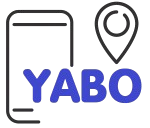Waste Collection/ Waste to Energy Solutions

Title of Business: Waste Collection / Waste to Energy Solutions.
Type: Production and Consulting
Key Product/s for Sale
Biogas
Electricity
Organic fertilizers (byproducts of the biogas production process)
Technology Considerations
Anaerobic digestion technology for biogas production
Gas engines or turbines for electricity generation
Advanced filtration systems to ensure biogas purity
Organic waste pre-treatment equipment
Market for the Product/s
- Urban and peri-urban households for biogas
- Industrial and commercial entities for electricity
- Agricultural sector for organic fertilizers
Key Inputs into the Business
- Materials: Organic waste (food waste, agricultural residue, animal manure)
- Labor: Skilled technicians, waste collection staff, administrative personnel
- Equipment: Anaerobic digesters, gas storage tanks, generators, waste collection vehicles
Product Preparation Process
- Waste Collection: Gathering organic waste from various sources (households, farms, markets).
- Pre-treatment: Sorting and shredding the waste to enhance anaerobic digestion.
- Anaerobic Digestion: Feeding the pre-treated waste into digesters to produce biogas.
- Biogas Filtration: Purifying biogas to remove impurities.
- Electricity Generation: Using gas engines or turbines to convert biogas into electricity.
- Fertilizer Production: Processing the digestate (remaining waste) into organic fertilizers.
Quality Considerations:
- Ensuring the anaerobic digesters operate efficiently with regular maintenance.
- Monitoring biogas quality to meet energy standards.
- Regular testing of organic fertilizers to ensure nutrient content and safety.
Cost of Investment
- Anaerobic Digesters: Ksh 70,000
- Filtration Systems: Reverse Osmosis Water Purifiers Prices in Kenya Shillings – From Ksh 180,000
Factors Influencing the Cost of a Reverse Osmosis Water Purifier
- Source of Water to be Purified
The source of your water plays a crucial role in determining the components of the water purifier. Different water sources have varying levels of contamination, necessitating different types of RO systems:
Borehole Water: Often has high levels of total dissolved solids (TDS), requiring a more advanced RO system with multiple stages of filtration and higher pressure.
Tap Water: Typically has lower levels of TDS, allowing for a simpler RO system with fewer stages and lower pressure.
- RO System Output Capacity
The output capacity of an RO system, measured in liters per hour (LPH), directly influences its price. Higher output capacity systems are more expensive:
50 LPH RO System: Approximately Ksh 30,000
500 LPH RO System: Approximately Ksh 300,000 - Reverse Osmosis Water Purifier Prices in Kenya
Our reverse osmosis water purifiers start from Ksh 180,000. The price varies based on the factors mentioned above, including the source of water to be purified and the desired output capacity.
What to Consider When Buying a Reverse Osmosis System
- Water Source: Determine the type and level of contamination in your water source to select the appropriate RO system.
- Output Capacity: Choose an RO system with a capacity that meets your daily water usage needs.
- Stages of Filtration: More stages typically mean better filtration but higher costs. Match the stages to the quality of your water source.
- Maintenance Costs: Consider the long-term maintenance costs, including filter replacements and system servicing.
- Brand and Warranty: Opt for reputable brands that offer warranties and after-sales support to ensure the reliability and longevity of your RO system.
- Waste Collection Vehicles: Ksh 1,000,000
Required Operational Infrastructure
- Facility for housing digesters and generators
- Storage tanks for biogas
- Office space for administrative operations
- Waste collection and transportation network
Most Suitable or Viable Location of the Business
- Near urban centers with high organic waste production
- Proximity to industrial areas for electricity supply
- Regions with significant agricultural activity for fertilizer use
Potential Sources of Investment Capital
- Government grants and subsidies for renewable energy projects
- Loans from financial institutions (e.g., KCB, Equity Bank)
- Venture capital and private equity investors
- Development agencies and international organizations (e.g., UNDP, GIZ)
Requirements for Effective Management
- Experienced management team with expertise in renewable energy
- Skilled technical staff for operations and maintenance
- Robust waste collection and supply chain management
- Strong customer relationship management for electricity and fertilizer sales
Role of Mobile Phone and ICT in the Business
- Mobile apps for waste collection scheduling and management
- ICT systems for monitoring digester performance and energy production
- Online platforms for customer service and sales
- Mobile payment systems for easy transactions
Statutory Regulations and Licences
- Environmental Impact Assessment (EIA) approval from NEMA 10,000 ksh
- Energy Regulatory Commission (ERC) licensing for electricity production:
The Energy Regulatory Commission (ERC) has proposed the following charges for electricity generation and transmission licenses:
Electricity Generation Licensing:
Initial licensing fee: Ksh 10,000 per MW installed.
Renewal, modification, or transfer fee: Ksh 5,000 per MW installed.
Electricity Transmission Licensing:
Initial licensing fee: Ksh 2,000 per MW of transfer capacity.
Annual renewal fee: Ksh 1,000 per MW of transfer capacity.
Local county business permits and health regulations compliance
Adherence to the Kenya Bureau of Standards (KEBS) for product quality
Pricing
Biogas: Ksh 70 per cubic meter
Electricity: Ksh 10 per kWh
Organic Fertilizers: Ksh 50 per kg
Profitability
Revenue generation from biogas, electricity, and fertilizer sales
Cost savings from utilizing waste as a resource
Potential for scaling up and expanding to new markets
Next Steps to Take
- Conduct a Feasibility Study: Assess market demand, waste supply, and potential locations.
- Secure Funding: Approach investors and apply for grants or loans.
- Acquire Land and Licences: Obtain necessary permits and land for the facility.
- Procure Equipment: Purchase and install anaerobic digesters and related equipment.
- Hire Staff: Recruit skilled personnel for various roles.
- Launch Operations: Start waste collection, biogas production, and electricity generation.
- Marketing and Sales: Promote products to target customers and establish sales channels.
- Monitor and Optimize: Continuously improve processes and expand the business.

